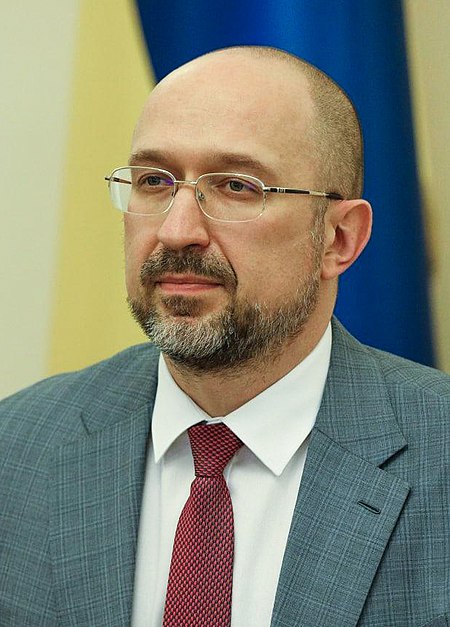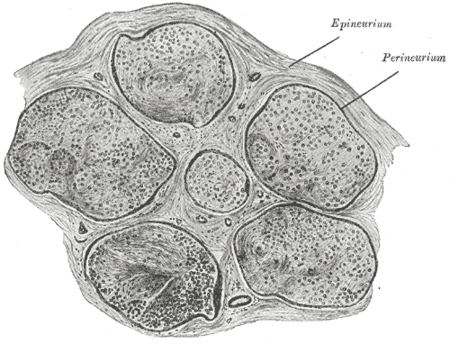Hindu–Arabic numeral system
|
Read other articles:

Davide Astori Astori con la nazionale italiana nel 2015 Nazionalità Italia Altezza 189 cm Peso 80 kg Calcio Ruolo Difensore CarrieraGiovanili 1995-1999 San Pellegrino1999-2001 Ponte San Pietro2001-2005 MilanSquadre di club1 2005-2006 Milan0 (0)2006-2007→ Pizzighettone25 (1)[1]2007-2008→ Cremonese31 (0)[2]2008-2014 Cagliari174 (3)2014-2015→ Roma24 (1)2015-2018 Fiorentina91 (3)Nazionale 2004-2005 Italia U-184 (0)2011-2017 Ital…

Voce principale: Taranto Football Club 1927. Taranto CalcioStagione 2000-2001Sport calcio Squadra Taranto Allenatore Sergio Buso poi Massimo Silva Presidente Massimo Giove Serie C21º posto nel girone C. Promossa in Serie C1. Coppa ItaliaPrimo turno Maggiori presenzeCampionato: Monza (32) Miglior marcatoreCampionato: Riganò (14)Totale: Riganò (15) StadioStadio Erasmo Iacovone 1999-2000 2001-2002 Si invita a seguire il modello di voce Questa voce raccoglie le informazioni riguardanti il Ta…

It has been suggested that Sierra Leone (1961–1971) be merged into this article. (Discuss) Proposed since February 2024. All People's Congress political rally in Kabala outside the home of supporters of the rival SLPP in 1968 In April 1961, Sierra Leone became politically independent of Great Britain. It retained a parliamentary system of government and was a member of the British Commonwealth of Nations. The Sierra Leone People's Party (SLPP), led by Sir Milton Margai were victorious in the f…

Aimee Garcia a Parigi nel 2022 Aimee Garcia (Chicago, 28 novembre 1978) è un'attrice statunitense. È conosciuta principalmente per i ruoli di Veronica Palmero nella sitcom George Lopez, di Jamie Batista nella serie televisiva Dexter e di Ella Lopez in Lucifer. È inoltre stata tra i personaggi principali delle serie di breve durata Trauma e Off the Map. Indice 1 Carriera 2 Filmografia 2.1 Cinema 2.2 Televisione 2.3 Doppiatrice 3 Doppiatrici italiane 4 Note 5 Altri progetti 6 Collegamenti ester…

For the 1963 film, see Méditerranée (film). Département de la Méditerranéedepartment of the First French Empire1808–1814 Flag Coat of arms Administrative map of the Italian portion of the French Empire.CapitalLivornoArea • Coordinates43°33′N 10°19′E / 43.550°N 10.317°E / 43.550; 10.317 • 1812[1]4,910 km2 (1,900 sq mi)Population • 1812[1] 318,725 History • Annexation from the Kin…

Voce principale: HUGtto! Pretty Cure. Logo occidentale della serie Lista degli episodi di HUGtto! Pretty Cure, quindicesima serie anime di Pretty Cure, trasmessa in Giappone su TV Asahi dal 4 febbraio 2018[1] al 27 gennaio 2019. In Italia è inedita. La sigla originale di apertura, We can!! HUGtto! Precure (We can!!HUGっと!プリキュア?), è cantata da Kanako Miyamoto, mentre quelle di chiusura, HUGtto! Mirai☆Dreamer (HUGっと!未来☆ドリーマ�…

Australian junior rugby competition S. G. Ball CupCurrent season or competition: [[2024 S.G. Ball Cup]]SportRugby leagueInstituted1965Inaugural season1965Number of teams15Country AustraliaPremiers St George Dragons (4th title) (2024)Most titles Parramatta Eels (14 titles)WebsiteS. G. Ball Cup Related competitionHarold Matthews CupLaurie Daley CupMal Meninga Cup The S. G. Ball Cup is a junior rugby league football competition played predominantly in New South Wales, between teams made up of …

Ця стаття потребує додаткових посилань на джерела для поліпшення її перевірності. Будь ласка, допоможіть удосконалити цю статтю, додавши посилання на надійні (авторитетні) джерела. Зверніться на сторінку обговорення за поясненнями та допоможіть виправити недоліки. Матер…

Fire department of the city of Chicago Chicago Fire Department (CFD)Operational areaCountryUnited StatesStateIllinoisCity ChicagoCoordinates41°49′50″N 87°37′26″W / 41.83056°N 87.62389°W / 41.83056; -87.62389Agency overviewEstablishedAugust 2, 1858; 165 years ago (1858-08-02)[1]Annual calls888,110 (2018)[2]Employees5,173 (2017)[2]CommissionerAnnette Nance HoltEMS levelAdvanced Life Support (ALS) & Basic Life Support…

烏克蘭總理Прем'єр-міністр України烏克蘭國徽現任杰尼斯·什米加尔自2020年3月4日任命者烏克蘭總統任期總統任命首任維托爾德·福金设立1991年11月后继职位無网站www.kmu.gov.ua/control/en/(英文) 乌克兰 乌克兰政府与政治系列条目 宪法 政府 总统 弗拉基米尔·泽连斯基 總統辦公室 国家安全与国防事务委员会 总统代表(英语:Representatives of the President of Ukraine) 总理…

For other uses, see Funiculus (disambiguation). FuniculusTransverse section of human tibial nerve.IdentifiersTA98A14.1.00.010FMA76738Anatomical terms of neuroanatomy[edit on Wikidata] A funiculus or column [1] is a small bundle of axons (nerve fibres), enclosed by the perineurium. A small nerve may consist of a single funiculus, but a larger nerve will have several funiculi collected together into larger bundles known as fascicles. Fascicles are bound together in a common membrane, t…

يفتقر محتوى هذه المقالة إلى الاستشهاد بمصادر. فضلاً، ساهم في تطوير هذه المقالة من خلال إضافة مصادر موثوق بها. أي معلومات غير موثقة يمكن التشكيك بها وإزالتها. (ديسمبر 2018) لماذا تتحارب الأمم why nations fight معلومات الكتاب المؤلف ريتشارد نيد ليو البلد المملكة المتحدة اللغة الإنكليزي�…

نادي نبتونس لكرة السلة معلومات النادي الدوري الدوري الليتواني لكرة السلة، دوري أبطال أوروبا لكرة السلة البلد ليتوانيا تأسس عام 1964 الموقع كلايبيدا ألوان الفريق أزرق، أبيض المدرب داينيوس أدومايتيس الموقع الرسمي http://www.bcneptunas.lt/en/ البطولات أطقم الفريق الطقم �…

Bilateral relationsMicronesia-Palau relations Micronesia Palau The Federated States of Micronesia and Palau share very good relations, as they are both bound by Compacts of Free Association with the United States.[citation needed] Palau decided not to join Micronesia when it became independent in 1986, due to language and other cultural differences. Palau became independent in 1994. Micronesian citizens may stay one year in Palau without a visa and a Palauan citizen may stay in Micronesi…

Human settlement in EnglandFreezywaterShops at FreezywaterFreezywaterLocation within Greater LondonOS grid referenceTQ361993London boroughEnfieldCeremonial countyGreater LondonRegionLondonCountryEnglandSovereign stateUnited KingdomPost townENFIELDPostcode districtEN3Dialling code020, 01992PoliceMetropolitanFireLondonAmbulanceLondon UK ParliamentEnfield NorthLondon AssemblyEnfield and Haringey List of places UK England London 51°40′33″N 0°01′50″W…

Ruling party of Albania from 1945 to 1991 Party of Labour of Albania Partia e Punës e ShqipërisëFirst SecretaryEnver Hoxha (1941-1985)Ramiz Alia (1985-1991)Founded8 November 1941 (1941-11-08)Dissolved13 June 1991 (1991-06-13)[1]Succeeded byPSPKShHeadquartersTiranaNewspaperZëri i PopullitYouth wingLabour Youth Union of AlbaniaPioneers of EnverMilitary wingNational Liberation Movement (1942–1945)Membership (1986)147,000IdeologyCommunismMarxism–Len…

Railway line in Japan Saikyō LineJASaikyō Line E233 series EMU set 127 approaching Kita-Yono Station in June 2021OverviewNative name埼京線Owner JR EastLocaleTokyo, Saitama prefecturesTerminiŌsakiŌmiyaStations19ServiceTypeCommuter railDepot(s)Kawagoe (Minami-Furuya)Rolling stockE233-7000 series, TWR 70-000 series , Sotetsu 12000 series EMUsDaily ridership1,105,557 (daily 2015)[1]HistoryOpened30 September 1985; 38 years ago (1985-09-30) (Akabane–Ōmiya section)Te…

Office of the US Department of Justice Executive Office for Immigration ReviewSeal of the Executive Office for Immigration ReviewAgency overviewFormedJanuary 9, 1983JurisdictionFederal government of the United StatesHeadquartersBailey's Crossroads, Virginia (Falls Church mailing address)Employees3,161 (2020)[1]Annual budget$734 million (FY 2021)[2]Agency executivesDavid Neal[3], Acting DirectorCarl C. Risch[4], Deputy DirectorParent agencyUnited States Department …

У этого термина существуют и другие значения, см. Николаевский монастырь. У этого термина существуют и другие значения, см. Монастырь Добруша. Добрушский Николаевский монастырьрум. Mănăstirea Dobrușa 47°48′04″ с. ш. 28°35′59″ в. д.HGЯO Тип Монастырь Страна Молдавия Местоп�…

Australian physician Frank TidswellMB ChM (Syd) DPH (Camb)BornFrancis Tidswell1867Sydney New South WalesDied26 February 1941 (aged 73–74)Paddington, New South WalesNationalityAustralianOccupation(s)Pathologist, Director of the Government Bureau of MicrobiologyKnown forSnake venom researchBubonic plague researchParent(s)Fred and Mary Ann TidswellThe Hon. Richard Jones MLC(Father-in-law) Francis (Frank) Tidswell (1867 – 26 February 1941)[1] was an Australian physician who…





![A calculation table [de], used for arithmetic using Roman numerals](http://upload.wikimedia.org/wikipedia/commons/thumb/e/e0/Rechentisch.png/120px-Rechentisch.png)






